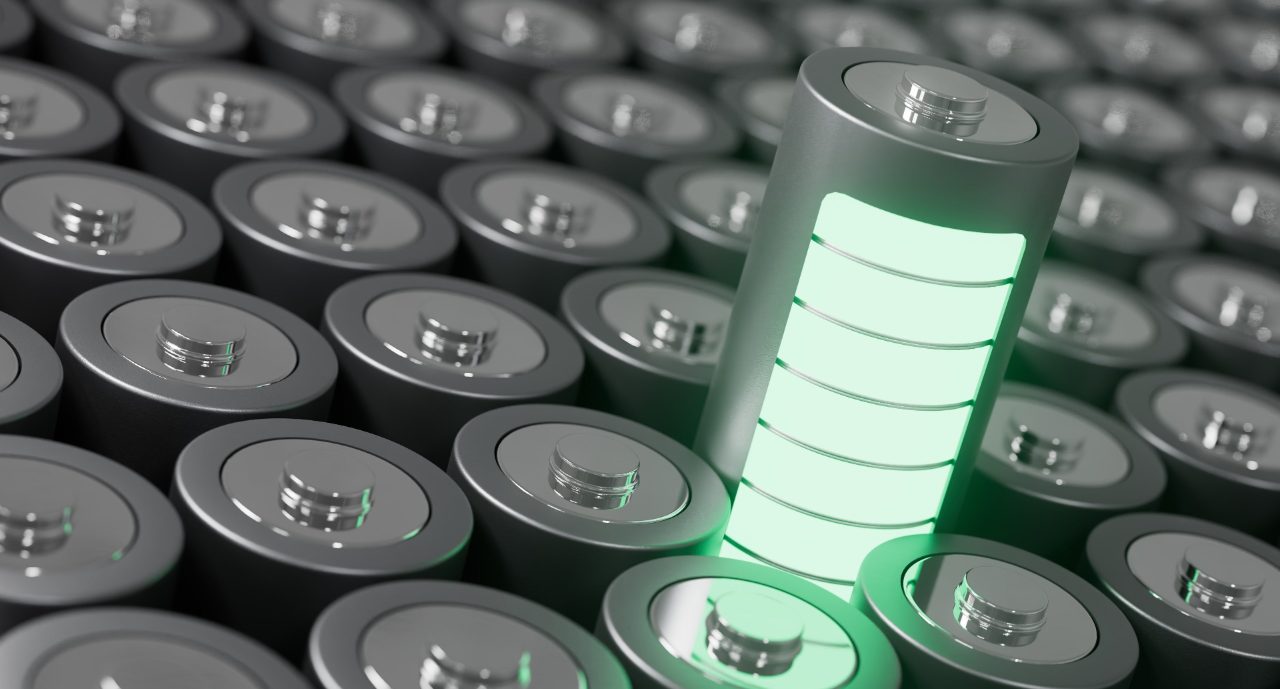Specialty Solids Probes
Battery Research Systems
Bruker offers solid-state NMR systems which are geared towards in situ research on energy storage materials such as batteries and supercapacitors. The probes and in situ NMR accessories, e.g. cells, for these systems are built by ePROBE, Bruker’s partner for battery analysis technology solutions. The probes are available in single resonance (X) or double-resonance (H-X or F-X) configurations. Each probe is equipped with current collector ports to enable charging and discharging of electrochemical cells while being inside the NMR magnet (Figure 1). In addition, the probes are equipped with integrated flow channels for gas or liquid to enable experiments on redox-flow, metal-air batteries, and similar systems.
Figure 2 shows an application example where 23Na in situ NMR was applied on a Na-metal vs. hard carbon electrochemical cell using a single-resonance battery research probe with automatic tune/match capabilities to investigate the formation of metallic conductive species in hard carbon anodes.
Watch the video interview
Oliver Pecher Ph.D. - CEO of ePROBE
Ordering Information Battery Research Probes
| Product | Available Frequencies | Product Code |
| Single Resonance (X) Probe for Battery Research with Integrated ATM Robot | 300 - 600 MHz WB | PA0950_SR/BB |
| Double Resonance (X/H) Probe for Battery Research | 300 - 500 MHz WB | PH0951_BB |
| Please discuss required and recommended accessories (e.g. an electrochemical cycler or tuning & matching equipment) with your Bruker representative. Non-standard probes, e.g. for different frequencies or for SB magnets, are available on request. Please contact Bruker for further information. | ||
Probes for Research on Catalyst Materials (MASCAT)
The MASCAT probe has been designed for NMR experiments to elucidate catalyst behavior under reactive gas exposure and variable temperatures of up to 400 °C. The probe operates with special 7 mm MAS rotors and makes use of a special stator design which has been modified to facilitate gas flow experiments: A special adapter is attached to the stator through which gas can be supplied to the sample substance via two connectors at the probe bottom. The gas flow adapter is shown in Figure 3.
A typical NMR experiment with a MASCAT probe consists of a series of 1D 13C experiments to detect and evaluate the influence of the catalytic gas at various temperatures. From these spectra, it is then possible to extract information about the catalytic reaction and the structure of the catalyst.
Ordering Information MASCAT Probes
| Product | Available Frequencies | Product Code |
| 7 mm X/H Probe for Catalyst Material Research | 400 - 600 MHz WB | PH0930_BB |
| Non-standard probes, e.g. for different frequencies or a special tuning range, are available on request. Please contact Bruker for further information. | ||
Systems for NMR Experiments at Very High Temperatures (LaserMAS)
Bruker’s CPMAS Laser Probe systems enable CPMAS NMR experiments at sample temperatures of up to 700 °C. For such experiments, the sample substance is placed in a special container (shown in Figure 4) which can be heated with a laser during the NMR experiment. The systems consist of a CPMAS laser NMR probe (shown in Figure 5), a high power laser, and the safety devices required for the operation of high power lasers. All Bruker CPMAS Laser Probes are HX probes and have been designed for 7 mm rotors with a spinning speed of 3 kHz during laser operation. The probes are compatible with WB magnets.
Figure 6 shows an application example of an NMR experiment that was performed with one of Bruker’s LaserMAS probes. The sample substance, an alumino-phosphate glass, was heated to more than 550 °C and then cooled, while a series of 27Al and 31P spectra were measured at different temperatures. The spectra reveal structural changes in the glass as the temperature is varied, e.g. the formation of crystals.
Ordering Information LaserMAS Probes
| Product | Available Frequencies | Product Code |
| 7 mm X/H LaserMAS Probe | 300 - 500 MHz WB | PH0925_BB |
| Laser Unit for Bruker LaserMAS Probes | N/A | PH0926 |
| Non-standard probes, e.g. for different frequencies or a special tuning range, are available on request. Please contact Bruker for further information. | ||
Probes for NMR Experiments at Very Low Temperatures (LTMAS)
Bruker’s LTMAS probes, as shown in Figure 7, enable CPMAS NMR experiments at sample temperatures as low as 95 K.
Such low sample temperatures lead to a gain of sensitivity due to the larger Boltzmann distribution of the spins at lower temperature, enable the study of sample dynamics frozen in a special state, or facilitate temperature variation studies in a very broad range. Exciting applications of LTMAS probes are described in the references listed below.
Special technical solutions are required to enable these low sample temperatures. For instance, the shielding tube of Bruker’s LTMAS probes is vacuum insulated, and the gas flow inside the probe has been optimized for thermal efficiency. Bruker’s LTMAS probes are equipped with integrated sample transfer systems to enable the exchange of rotors while the probe is cold and in the magnet. For reliable operation at the lowest possible temperatures, and to avoid temperature gradients in the sample, it is recommended to operate LTMAS probes with Bruker’s LTMAS cabinet. In addition to cooling the gas which is used for sample temperature control, the LTMAS cabinet cools the bearing and drive gas flows.
Selected Publications:
- Berkson Z. et al., Preferential Siting of Aluminum Heteroatoms in the Zeolite Catalyst Al‐SSZ‐70, Angew. Chem. Int. Ed., 2019, 58, 1 – 6
- Gauto D. et al., Aromatic Ring Dynamics, Thermal Activation, and Transient Conformations of a 468 kDa Enzyme by Specific 1H–13C Labeling and Fast Magic Angle Spinning NMR, J. Am. Chem. Soc., 2019, 141, 11183 – 11195
- Blahut J. et al., Monitoring Dynamics, Structure, and Magnetism of Switchable Metal–Organic Frameworks via 1H‐Detected MAS NMR, Angew. Chem. Int. Ed., 2021, 60, 21778 –21783
Ordering Information LTMAS Probes
| Product | Available Frequencies | Product Code |
| 3.2 mm X/Y/H Low Temperature MAS (LTMAS) Probe | 400 - 800 MHz WB | PH2747_NCH |
| 1.9 mm X/Y/H Low Temperature MAS (LTMAS) Probe | 400 - 800 MHz WB | PH2785_NCH |
| 1.3 mm X/Y/H Low Temperature MAS (LTMAS) Probe | 400 - 800 MHz WB | PH2797_NCH |
| Non-standard probes, e.g. for smaller rotor diameters or a special tuning range (such as low-gamma), are available on request. Please contact Bruker for further information. | ||
Static Solid-State NMR Probes
Bruker's HX static solid-state probes enable both proton and X-nucleus experiments with static samples. The samples are inserted into a cavity in the probe which is perpendicular to the magnet’s B0 field. This is shown in Figure 8.
Bruker’s static probes come in two form factors: SB (Standard Bore) and WB (Wide Bore), catering to different experimental setups. The SB static solid-state probes are available for 5 mm samples.
Bruker’s WB static solid-state probes also accommodate a typical sample size of 5 mm, although other diameters can be requested to suit specific experimental needs. To facilitate tuning of the X channel, exchangeable inserts are utilized. These inserts allow for adjustments to set the probe's range to specific nuclei of interest. Additionally, special low-Q inserts are available, enabling broadband excitation. This feature proves advantageous in experiments requiring a broad spectral coverage.
Compared to Magic Angle Spinning (MAS) probes, where the NMR sample is spun at high speed to average out dipolar interactions, static solid-state probes have a larger sample volume and longer RF coils, which both contribute to enhanced sensitivity in static solid-state experiments. Furthermore, static probes are relatively less complex compared to MAS probes, which involve intricate spinning mechanisms. The relative simplicity of static probes makes them easier to operate and maintain, providing convenience to researchers and facilitating efficient experimental setups.
Static probes find numerous applications in solid-state NMR studies. One common application is the determination of Chemical Shift Anisotropy (CSA) tensors, which provide valuable information about molecular structure and dynamics. Static probes are also well-suited for analyzing single crystal samples, allowing for detailed investigations of their properties.
Ordering Information Static Probes
| Product | Available Frequencies | Product Code |
| 5 mm Double Resonance (X/H) SB Static Solid-State Probe | 400 - 600 MHz SB | PA0870_BB |
| 5 mm Double Resonance (X/H-F) WB Static Solid-State Probe | 400 - 600 MHz WB | PH0800_BB_E |
| Non-standard probes, e.g. for different frequencies or with a ceramic chamber for elevated sample temperatures, are available on request. Please contact Bruker for further information. | ||

